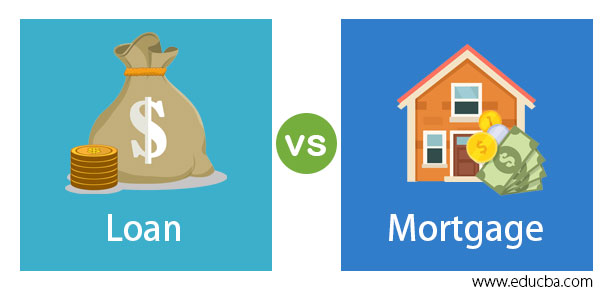Understanding Conventional Mortgage Loans: Benefits and Needs
Understanding Conventional Mortgage Loans: Benefits and Needs
Blog Article
The Essential Elements to Take Into Consideration When Picking Between Fixed-Rate and Variable-rate Mortgage Car Loans
When evaluating home loan alternatives, customers face a critical choice in between fixed-rate and adjustable-rate finances, each offering unique benefits and possible mistakes. Trick considerations such as passion price security, predictability in monthly repayments, and the implications of potential rate changes can substantially influence long-lasting financial health and wellness.
Rate Of Interest Price Stability
When selecting a mortgage, comprehending interest price stability is important for notified decision-making. Passion prices can dramatically influence the general price of a home mortgage, and identifying the nature of these prices is essential for borrowers.
On the various other hand, variable-rate mortgages (ARMs) begin with lower first prices that may transform occasionally based on market problems. While this can cause reduced payments originally, it likewise introduces uncertainty, as consumers may deal with increased repayments if rates of interest climb. For those taking into consideration an ARM, it is essential to examine the likelihood of rate adjustments, the potential for settlement rises, and the length of the initial fixed-rate period.
Eventually, the choice in between adjustable-rate and fixed-rate home mortgages hinges on individual danger tolerance and financial situations. Recognizing rate of interest security aids customers make educated decisions that align with their lasting financial goals.
Monthly Payment Predictability
While borrowers frequently prioritize interest rate stability, the predictability of regular monthly settlements is equally important in the home mortgage selection process (Conventional mortgage loans). Regular monthly repayment predictability plays an important duty in budgeting and financial planning, as it straight affects a homeowner's money circulation and general financial health
Fixed-rate mortgages use a consistent month-to-month repayment throughout the life of the funding, permitting customers to prepare for and prepare their expenditures properly. This security can be especially advantageous for new buyers or those on a fixed revenue, as it gets rid of the uncertainty related to rising and fall payments.
Conversely, adjustable-rate home mortgages (ARMs) typically include lower preliminary repayments that can change with time, bring about potential irregularity in regular monthly commitments. While initially appealing, this unpredictability can make complex economic preparation, specifically if customers do not make up future rate adjustments.
Prospective Price Changes
In the realm of variable-rate mortgages (ARMs), potential price changes stand for a considerable aspect that consumers must very carefully take into consideration. Unlike fixed-rate home mortgages, where the interest rate remains the same for the life of the car loan, ARMs are defined by varying rate of interest that are tied to market indices. This variability can cause substantial adjustments in month-to-month repayments, impacting the borrower's economic planning and budgeting.
Debtors should be conscious of the margin and index utilized to calculate these changes, as they directly affect future rate of interest rates. Furthermore, ARMs commonly consist of caps that restrict how much the rate of interest price can enhance at each modification and over the life of the car loan, which can supply some degree of defense versus extreme rate walkings.
Understanding these potential modifications is critical for customers, as they directly impact long-term settlement responsibilities. Therefore, analyzing individual economic circumstances and risk resistance is important when determining whether an ARM aligns with one's financial goals.
Funding Term Factors To Consider
Finance term considerations play a critical function in the decision-making procedure for consumers picking between fixed-rate and adjustable-rate home mortgages. The size of the finance term dramatically impacts regular monthly payments, rate of interest, and total economic planning. Fixed-rate home mortgages typically offer terms of 15 to thirty years, providing security in month-to-month payments and predictability in budgeting. This can be particularly appealing for borrowers that prepare to remain in the very same home long-term and choose the certainty of set repayments throughout the life of the finance.

Eventually, customers must assess their individual situations, financial goals, and market problems when evaluating the effects of car loan term choices within each home mortgage kind.

General Expense of Loaning
The overall cost of borrowing is a crucial aspect that can dramatically influence a debtor's option in between adjustable-rate and fixed-rate home mortgages. Fixed-rate home loans supply foreseeable regular webpage monthly payments, as the rate of interest continues to be continuous throughout the car loan term. This predictability can lead to lower general prices, particularly in a secure or decreasing passion rate environment. Debtors can budget plan properly, knowing their settlements will certainly not change.
On the other hand, variable-rate mortgages (ARMs) generally begin with reduced initial prices, leading to lowered in advance prices. These prices can raise after a preliminary duration, leading to potentially higher lasting expenses. Customers need to consider the regularity and level of rate changes, along with the overall funding period, to precisely assess the financial effects.
Moreover, the general expense of borrowing incorporates not only rates of interest but also charges and various other associated expenses, such as shutting costs and insurance (Conventional mortgage loans). When reviewing home loan choices, borrowers must perform a thorough expense analysis over the life of the finance. By doing so, they can make an informed decision that straightens with their economic objectives and risk tolerance
Final Thought
Interest rate stability and regular monthly settlement predictability are critical for reliable budgeting, while the possibility for price changes in ARMs introduces monetary unpredictability. In addition, the expected period of homeownership and the overall cost of loaning, including rate of interest prices and connected charges, have to line up with specific economic circumstances and run the risk of tolerance.
Secret considerations such as rate of interest rate stability, predictability in regular monthly repayments, and the ramifications of potential price adjustments can considerably impact long-term financial wellness. Interest prices can considerably influence the general cost of a mortgage, and acknowledging the nature of these rates is crucial for consumers. Unlike fixed-rate home mortgages, where the passion price remains unmodified for the life of the lending, ARMs are characterized by rising and fall passion prices that are linked to market indices. Furthermore, ARMs typically include caps that click this link limit just how a lot the rate of interest rate can raise at each change and over the life of the finance, which can supply some level of protection versus extreme rate walks.
Rate of interest price stability and monthly settlement predictability are extremely important for efficient budgeting, while the possibility for rate changes in ARMs presents financial unpredictability.
Report this page